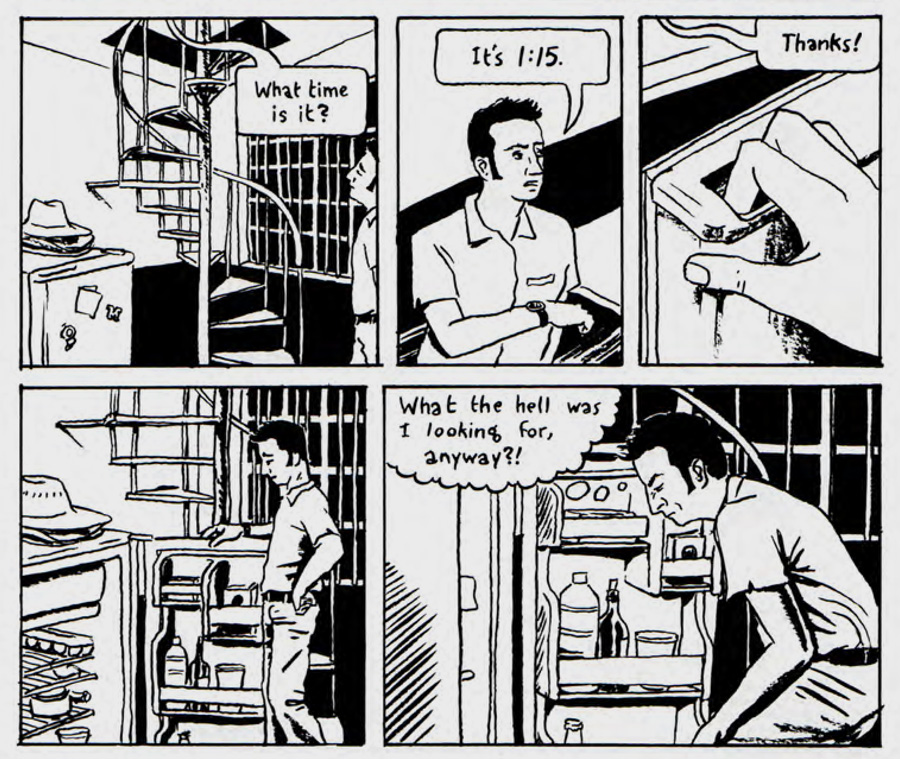Week 4 – Understanding Visual Narratives

This week’s second intensive day was the stand-out event. Previously, on the first day, we were introduced to a number of different methods to do with creating visual art, and studied the work of several artists. It was an engaging and fascinating day. But, on the second day, we began the session with a truly intriguing lecture by the artist and storyteller Solomon Enos. From his studio in Hawaii, he engaged with the class and dissected the ‘being’ and ‘aura’ of an artist – all whilst working on a painting.
There were several incredible points made throughout his lecture that I was super interested in following up. Some of the key points were as follows:
- When you fight with nature [in art], you dance with nature; in fighting there is a winner and a loser, but in dancing there’s a winner and a winner. ‘Human conundrum.’ “We as a species have made it to a door but forgotten the code. Art helps suggest it [to those who interact with it].” It’s a team effort.
- Time becomes elastic when making art. “I paint for work, I paint for fun, and when I want to get away from it all…I paint.” Several students in the class were intrigued by how to achieve a ‘state of flow’ to which he answered that: “Inspiration is a room that leads to another room that leads to another room…and that has doors leading to several realities.”
- Painting in batches to capture ‘all angles’ of an idea; squeezing jam from a doughnut without having to eat it: it’s okay to milk an idea/concept you don’t necessarily understand yourself. Meaning can be derived by the art’s audience and doesn’t have to come from the artist themselves. It’s okay to create art you may not attach meaning to. As a writer, meaning is something usually viewed as primitive and sacred to the process. Thus I found the idea of not ‘having to have meaning’ as particularly fascinating (and worth a try!)
- Art and AI. “If you can’t beat them, join them, and then beat them.” AI generated art makes human-made art more valuable; ‘wow it has real cheese in it.’ Beauty isn’t enough, we want to see the process. If everyone is doing digital AI art, people are going to want to go beyond it – to something more primal. Enos’ was particularly optimistic when discussing a topic that is usually viewed as dire and looming over the world of art and human expression. I found it very refreshing.
- Working with motifs and repeating motifs; art as a form of storytelling. Enjoying every step of the process rather than hurtling towards the finished product. This is advice I will attempt to replicate whilst working on my final piece as, previously, I had never considered myself as someone particularly artistic. Thus, perhaps by learning to enjoy the process, I can come to understand my skill sets as an ‘artist’ and ‘designer’ better, and to perhaps even unlock new potential.
Following this excellent lecture, we then continued on our design project from the first day. As I’d written a short prose piece (Synthetic Skin between You and I), the challenge became to find a suitable median to convey this story through visual design. Dr. Dingwall introduced us to the intriguing book entitled ’99 Ways to Tell a Story’ by Matt Madden, which details several different ways to tell the same story. Madden explores a multitude of ways of playing with the comic book format, and plays with styles from prominent artists such as Hergé, ideas of time and themes (such as reversion), and artistic modes (manga, minimalist, maximalist). I was immediately attracted to the freedom and expression that comic books offer, and thus decided to design my final project in the style of a comic book. I am currently drawing from some of my favourite comic artists such as Winsor McCay (in the style of ‘Silas‘), and 김용키 (in the style of ‘타인은 지욱이다‘).
In another course that I am studying, we are currently looking at science fiction and horror as genres and how to effectively communicate them in art/creative writing. I will aim to combine all the skills I am learning into one conducive output.
For my final project, I am starting to believe that combining my writing skills (from my undergrad degree and from my separate course), along with the new visual skills from this course, will help generate a successful project that looks at the future. Perhaps a visual picture book?



